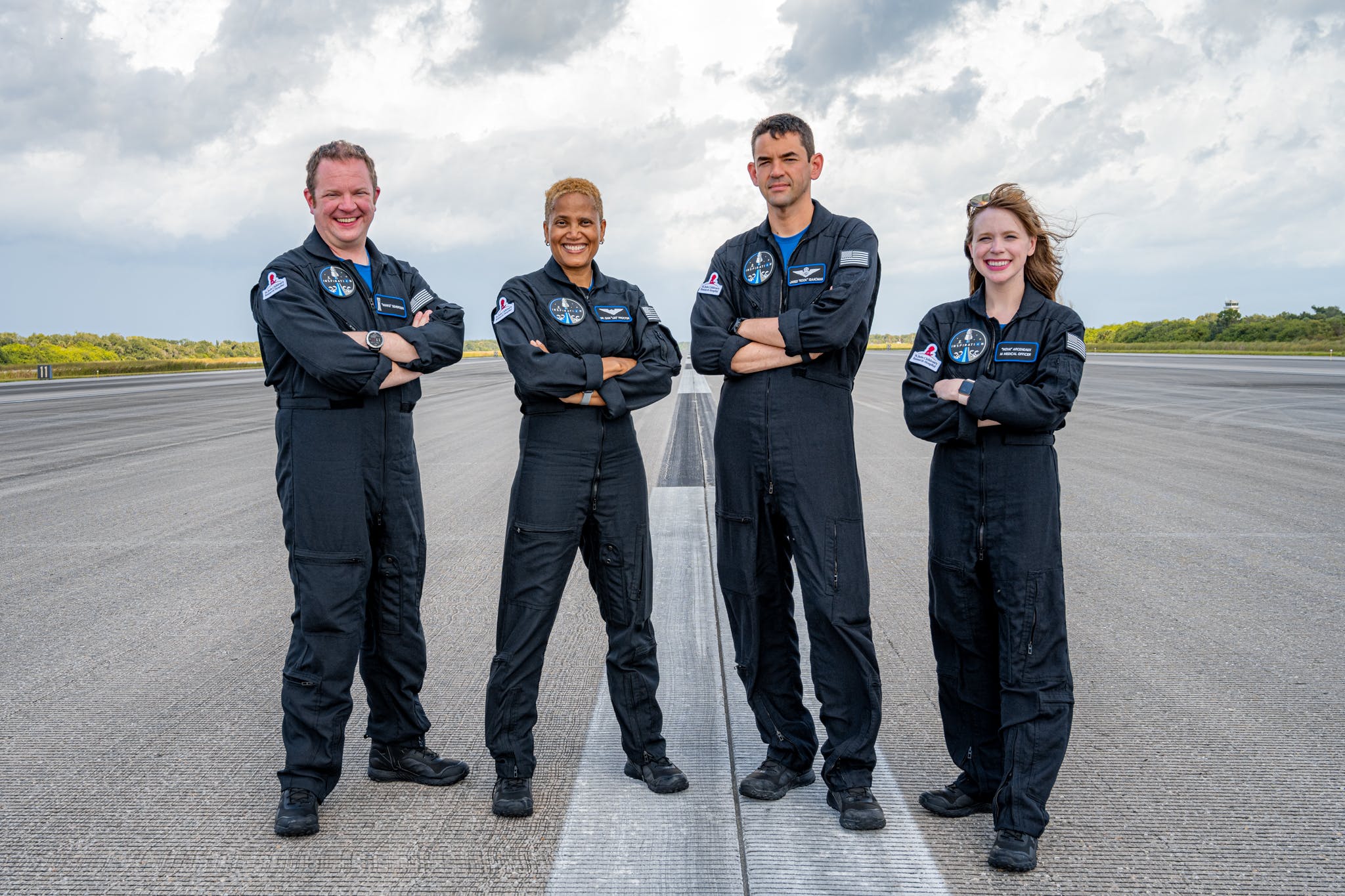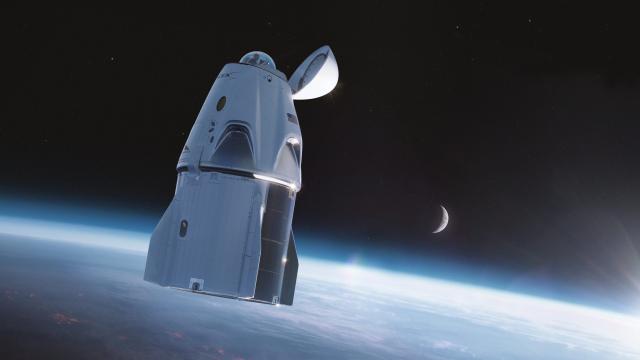To date, every mission to low Earth orbit has included at least one professional, government-employed astronaut. That’s set to change this week as an all-civilian crew prepares to blast off from Kennedy Space Centre in Florida.
It’s been quite the year for the burgeoning space tourism industry. In July, both Virgin Galactic and Blue Origin, with their respective billionaire founders on board, launched crewed vehicles to the edge of space. Now it’s SpaceX’s turn to do the same, but, like virtually everything the Elon Musk-led company does, its attempt is considerably bolder.
For the Inspiration4 mission, SpaceX will launch four civilians — Jared Isaacman, Hayley Arceneaux, Sian Proctor, and Chris Sembroski — to orbit, and they will circle Earth repeatedly for three days before splashing down off the coast of Florida. By contrast, the Virgin Galactic and Blue Origin flights were suborbital, lasting for only a few minutes and meeting the minimal requirements for entering space.

If all goes according to plan, Inspiration4 will be the first fully commercial crewed flight to reach low Earth orbit. SpaceX is offering an entirely new kind of journey to space, though a kind that will only be accessible to the ultra rich. Isaacman, the billionaire founder and CEO of Shift4 Payments, “plunked down an unspecified but presumably exorbitant sum” so that he and three “specially selected travel mates” can reach low Earth orbit aboard the Resilience Crew Dragon, as Reuters reports. Spaceflight Now says SpaceX will eventually charge $US50 ($68) million per seat for future private missions.
A SpaceX Falcon 9 rocket was rolled out to Kennedy Space Centre’s Launch Complex 39A on Saturday, September 11, and the crew performed a dress rehearsal the next day. Blastoff is scheduled for Wednesday, September 15, with a five-hour launch window beginning at 8:02 p.m. EDT (10:00 a.m. AEST the following day). There’s currently a 70% chance of favourable weather conditions. Should the launch be scrubbed, the backup window starts again on Thursday at the same time. This will be just the fourth launch of a crewed Crew Dragon.

Resilience will not dock with the International Space Station, allowing for the removal of the Crew Dragon docking port. In its place is the Dragon Cupola — a glass dome that will provide an exquisite view of Earth. SpaceX will send the spacecraft to an altitude of 575 km, where it will travel at 22 times the speed of sound and orbit Earth once every 90 minutes. For reference, the International Space Station is approximately 425 km above Earth, while the crewed spacecraft operated by Virgin Galactic and Blue Origin never got any higher than 106 km above the ground.
Isaacman, 38, will be joined by Hayley Arceneaux, 29, a physician’s assistant at St. Jude Children’s Research Hospital and a childhood bone cancer survivor; Sian Proctor, 51, a geoscientist and licensed pilot; and Chris Sembroski, 41, a U.S. Air Force veteran and aerospace data engineer. Arceneaux will be the first person to go to space with a prosthesis, as well as the youngest American to orbit Earth.
Both Proctor and Sembroski won a global contest for their seats, during which time over $US110 ($149) million was raised for the children’s hospital. The four crewmembers are meant to represent the four mission pillars: leadership, hope, generosity, and prosperity. It should be pointed out that none of the four crew members will need to do any piloting, as the mission is completely autonomous.
While in space, the crew will perform “carefully selected research experiments on human health and performance” with “potential applications for human health on Earth and during future spaceflights,” according to the Inspiration4 website. With technical help from Weill Cornell Medicine and the Translational Research Institute for Space Health (TRISH) at Baylor College of Medicine, the crew will track ECG activity, movement, sleep, heart rates, and blood oxygen, among other health measures. They’ll also run blood tests, perform balance and perception tests, and use an ultrasound device to scan their organs.
Inspiration4 is a carefully curated and perfectly packaged product designed to deflect any criticism as a for-profit business venture. And that’s fine, as we can all see through the pretence. But even though the billionaire-led space tourism era seems to have begun in earnest, us regular folks know it’ll be a very long time — if ever — before we get a chance to reach space.
